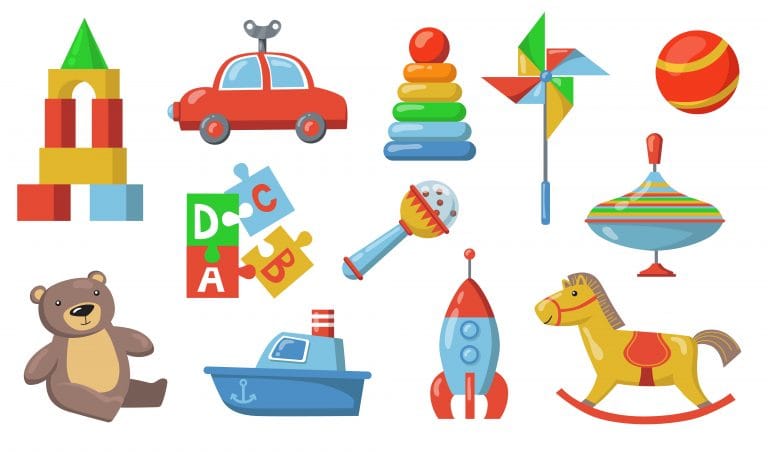- Toddler
Free the Dinosaurs!
Learning Areas:
- Science
- Movement

Overview
What is this activity?

ECSEL Standards
What skills are being enhanced? What knowledge is gained?

Materials
What do you need to prepare for this activity?


Instructions
Step by step guide

ECSEL Prompts
What questions can you ask to promote ECSEL thinking and discussions?

Extended Learning
How can you extend children’s thinking?
Overview
Help free the dinosaurs from the ice! Use your hands and different tools to melt ice and free toy dinosaurs.

ECSEL Standards & Learning Goals
What skills are being enhanced & what knowledge is being gained through this activity?
Emotional Identification
Children will begin to recognize and identify the four basic emotions (happy, sad, angry, and scared) as they arise during their exploration of ice, water, and salt with teacher guidance and support.
Emotional Understanding
Children will begin to understand that we experience different emotions at different times throughout the day with teacher guidance and support.
Cause & Effect
Children will begin to connect their emotions to simple causes related to this activity with modeling and guidance from teachers.
Problem Solving
Children will use their problem-solving skills to figure out how to melt the ice using their hands and tools to free the dinosaurs.
Empathy & Prosocial Skills
Children will work together to share supplies and melt the ice.
CASEL Standards
Self-Awareness, Social Awareness, Relationship Skills, Responsible Decision-Making
Materials
- Different sized plastic bowls (one bowl for each toy dinosaur)
- Access to a freezer
- Small toy dinosaurs (small enough to fit inside the bowls, but not too small to be a choking hazard)
- Sensory bin(s) for tabletop use
- Small bowls of salt (2-3)
- Bowls of water (2-3)
- Spoons (1 per child)
- Pipettes (1 per child)
- Butcher block paper
- Tape

Instructions:
- To prepare for this activity:
- Find several bowls of different sizes (you should have a bowl for each toy dinosaur). Fill bowls with water and place 1 dinosaur in each. Freeze overnight.
- Place butcher block paper over each surface that will be used for this activity and secure it down with tape.
- Set out a large sensory bin over each surface used for this activity. Set out enough bins that each seated child can reach a bin.
- Next to the sensory bin(s), place pipettes, spoons, bowls of water, and small bowls of salt so they can be reached at different spots on the table.
- Introduce the activity at circle time by showing children the bowls with the dinosaurs frozen inside and ask what they notice about the dinosaurs:
- “Can the dinosaurs move or are they stuck?”
- “What happens if I turn this bowl upside down? Will the dinosaurs stay in the ice or will they fall out onto the ground?”
- Turn the bowls upside down to demonstrate that the dinosaurs are stuck inside the ice and cannot easily come out.
- Pass around the bowls and support children’s observation of the ice. What do they notice about the ice? Ask questions to prompt a group discussion:
- “How does it feel to touch the ice? Does it make your hand feel warm or cold? Is the ice soft or hard?”
- Verbally acknowledge any emotions that arise during observations.
- Support and encourage nonverbal children to point out any observations they notice.
- “Can you point to where the dinosaur is in the ice? What part feels cold?”
- Explain to children that these dinosaurs are stuck in the ice and they need helpful friends who can get them out!
- Guide children to the activity area and support them in sitting in chairs or standing around the table.
- Empty the ice into the sensory bin(s). If the ice cannot be removed from the bowls, put the bowls into the sensory bin(s). Encourage children to begin exploring different ways they can melt the ice using their hands and tools in front of them.
- Demonstrate how they can use their hands to apply heat and how they can spoon water or salt from the bowls onto the ice.
- Encourage and support children to try using the pipettes and demonstrate by placing the pipettes in the water, pinching the top part with your fingers, and releasing them to gather water. Next, move the pipette over the sensory bin and pinch again to release the water. For children with emerging fine motor skills, provide hands-on support in using pipettes until they can try independently.
- As the children explore, focus on how helpful their actions are for the dinosaurs and how we can help friends who feel “stuck”:
- “Sometimes when I’m feeling sad, I feel stuck and need a hug to help me feel better.”
- “Who has ever felt sad before? Can everyone show me what a sad face looks like?”
- “Your dinosaur is almost out of the ice! You must be working so hard to help your dinosaur friend. I see you using your hands to warm the ice and pouring water with your spoon.”
- “It makes me so happy to see my friends helping other friends when they are feeling sad or stuck!”
- Verbally acknowledge any emotions that arise during this activity and praise acts of collaboration and problem-solving.
ECSEL Prompts
ECSEL Prompts are helpful questions & guiding statements you can use to provoke children’s thinking about emotions. These prompts are related to this specific activity.
One of our friends was feeling happy at the beginning of the activity, but now I see a frown on their face. Our emotions can change a lot throughout the day!
I see that you threw your spoon on the ground and have a frown on your face. Are you feeling angry that the ice isn’t melting yet?
I see that one of our friends doesn't have enough room at the table. Can we move our bodies so they can fit?
I see a big smile on your face and I hear a lot of laughing. Are you feeling happy?
How can we use our hands to melt the ice? If one hand isn’t enough, can we work as a team?
Extended Learning
Use these questions & ideas to extend children’s learning!
Extend this activity by adding an element of color exploration by mixing liquid watercolors with water in the bowls before freezing.
- When the dinosaurs have been freed, use the toy dinosaurs, paintbrushes, and watercolor paper to create art with the colorful melted water!
Create fizzing ice cubes with a chemical reaction! Sprinkle baking soda over the ice cubes and make a mixture of 1 part vinegar with 1 part water in a bowl to discover what happens when the two ingredients combine!
